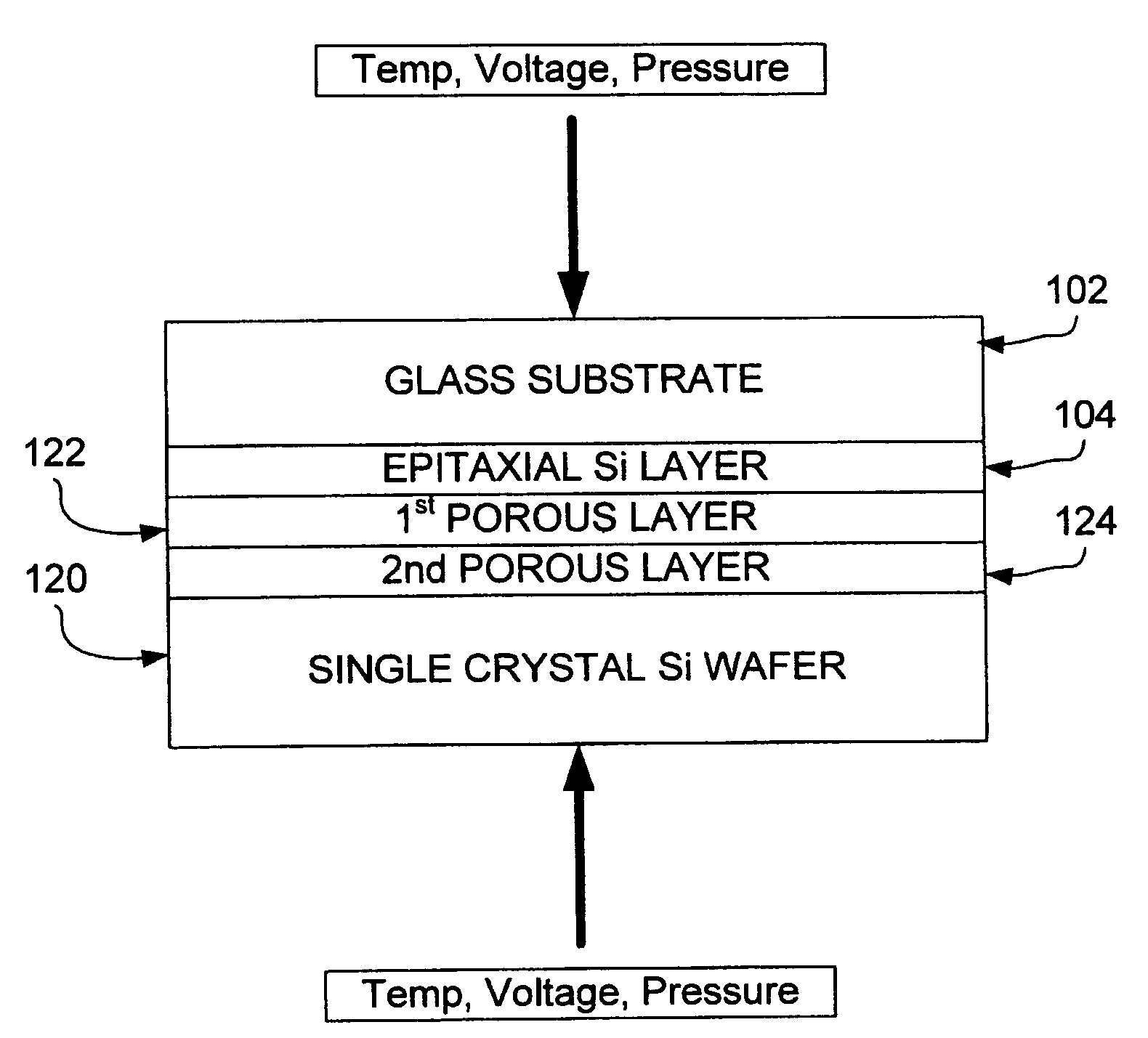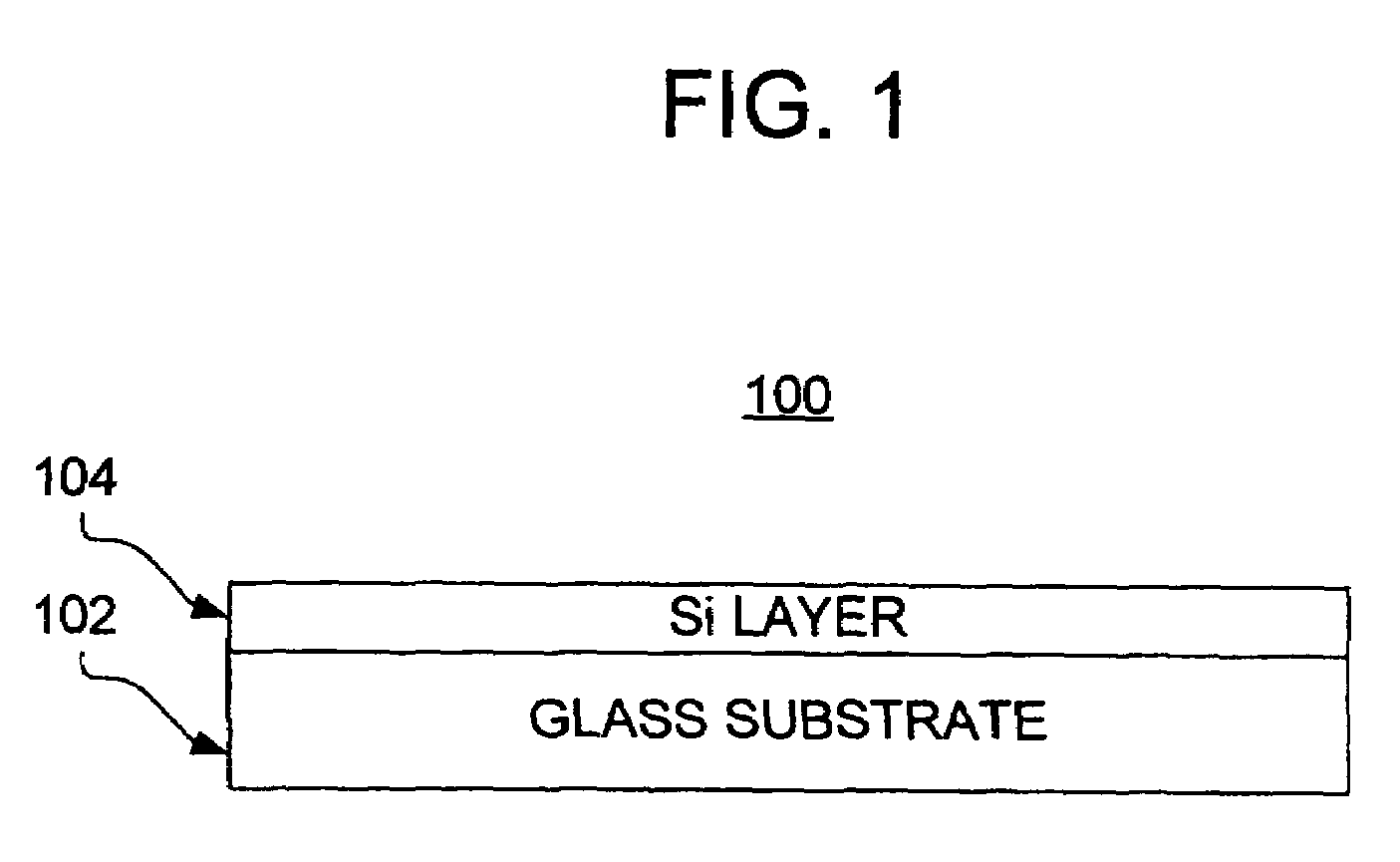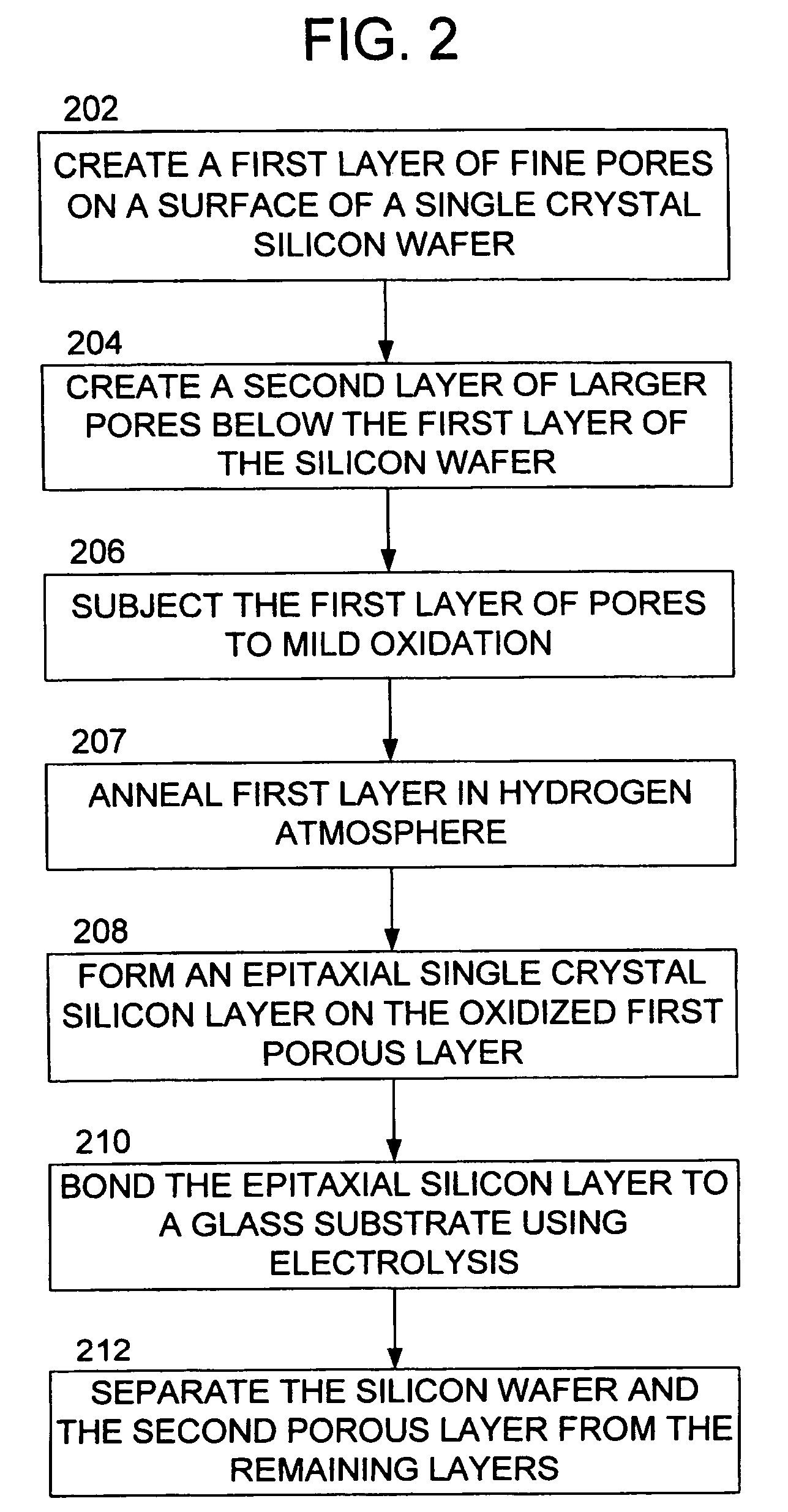Glass-based semiconductor on insulator structures and methods of making same
a glass-based semiconductor and insulator technology, applied in the direction of thin material processing, electrical equipment, transportation and packaging, etc., can solve the problems of cost and/or bond strength and durability, cost of silicon wafers, and cost of supporting substrates, etc., to reduce surface roughness, reduce defects, and stabilize pore structure
- Summary
- Abstract
- Description
- Claims
- Application Information
AI Technical Summary
Benefits of technology
Problems solved by technology
Method used
Image
Examples
Embodiment Construction
[0036]With reference to the drawings, wherein like numerals indicate like elements, there is shown in FIG. 1 an SOG structure 100 in accordance with one or more embodiments of the present invention. The SOG structure 100 preferably includes a glass substrate 102 and a semiconductor layer 104. The SOG structure 100 has suitable uses in connection with fabricating thin film transistors (TFTs), e.g., for display applications, including organic light-emitting diode (OLED) displays and liquid crystal displays (LCDs), integrated circuits, photovoltaic devices, etc.
[0037]The semiconductor material of the layer 104 is preferably in the form of a substantially single-crystal material. The word “substantially” is used in describing the layer 104 to take account of the fact that semiconductor materials normally contain at least some internal or surface defects either inherently or purposely added, such as lattice defects or a few grain boundaries. The word “substantially” also reflects the fac...
PUM
| Property | Measurement | Unit |
|---|---|---|
| resistivity | aaaaa | aaaaa |
| pore sizes | aaaaa | aaaaa |
| pore sizes | aaaaa | aaaaa |
Abstract
Description
Claims
Application Information
 Login to View More
Login to View More - R&D
- Intellectual Property
- Life Sciences
- Materials
- Tech Scout
- Unparalleled Data Quality
- Higher Quality Content
- 60% Fewer Hallucinations
Browse by: Latest US Patents, China's latest patents, Technical Efficacy Thesaurus, Application Domain, Technology Topic, Popular Technical Reports.
© 2025 PatSnap. All rights reserved.Legal|Privacy policy|Modern Slavery Act Transparency Statement|Sitemap|About US| Contact US: help@patsnap.com



